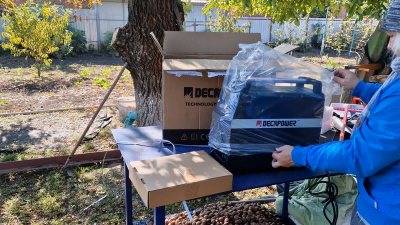Exploring the Basics of Plasma Cutting
Plasma cutting has emerged as a significant method in the field of metal fabrication, particularly for sheet metal. Understanding its fundamentals is crucial for professionals who seek to leverage its capabilities.
Definition and Principles of Plasma Cutting
Plasma cutting is a process that employs an accelerated jet of hot plasma to cut through electrically conductive materials. The basic principle involves creating an electrical channel of superheated, electrically ionized gas, i.e., plasma, from the cutter through the workpiece to form a completed electric circuit back to the cutter via a grounding clamp. As the plasma jet hits the material, it melts and blows away the cut portion.
How Plasma Cutters Operate
The operation of plasma cutters involves several components working in harmony. An electrical arc is generated between an electrode (cathode) and the workpiece (anode). This arc ionizes the gas flowing through a constricted opening, creating plasma. The high-speed plasma flow melts the material while simultaneously blowing away molten metal, resulting in a precise cut.
Advantages of Plasma Cutting for Sheet Metal
Plasma cutting offers numerous advantages when it comes to working with sheet metal, making it a preferred choice among professionals.
Precision and Efficiency in Cutting
· Accuracy: Plasma cutting provides high precision cuts with minimal kerf width, allowing for intricate designs.
· Speed: It is significantly faster compared to traditional methods like oxy-fuel cutting.
· Quality: Produces clean edges with minimal dross formation.
Versatility and Cost-effectiveness
· Material Compatibility: Effective on various metals including steel, stainless steel, aluminum, brass, and copper.
· Thickness Range: Capable of cutting both thin and thick metals efficiently.
· Cost Savings: Reduced labor costs due to faster processing times and less need for secondary operations like grinding or sanding.
Technological Advances in Plasma Cutting
Continuous innovations have propelled plasma cutting into new realms of performance and efficiency.
Innovations Enhancing Performance
Recent advancements have focused on enhancing precision and reducing operational costs:
· CNC Integration: Computer numerical control (CNC) systems allow for automated precision cuts.
· High-definition Plasma Systems: Offer improved cut quality by utilizing tighter arc constriction.
· Consumable Longevity: Advances in consumable technology reduce replacement frequency and cost.
Environmental Considerations
Environmental impact is a growing concern in industrial processes:
· Reduced Emissions: Modern systems are designed to minimize harmful emissions compared to older technologies.
· Energy Efficiency: Newer models consume less energy while maintaining high performance levels.
Challenges and Limitations of Plasma Cutting
Despite its advantages, plasma cutting faces certain challenges that users must navigate.
Potential Drawbacks in Use
· Material Limitations: Not suitable for non-conductive materials such as plastics or ceramics.
· Surface Finish: May require additional finishing for applications demanding perfect surface smoothness.
Safety Concerns and Solutions
Safety remains paramount when operating plasma cutters:
· Hazards: Risks include exposure to ultraviolet light, fumes, noise, and hot metal splatter.
To mitigate these risks:
· Protective Gear: Use of appropriate personal protective equipment (PPE) such as gloves, goggles, and welding helmets.
· Ventilation Systems: Proper ventilation or fume extraction systems should be employed to manage airborne contaminants effectively.
Decapower: A Reliable Supplier for Plasma Cutters
In the realm of metal fabrication, having reliable equipment is crucial for achieving precision and efficiency. Decapower stands out as a reputable supplier of plasma cutters, providing tools that cater to various industrial needs. Their commitment to quality and innovation has made them a preferred choice among professionals in the field.
Overview of Decapower's Product Range
Decapower offers an extensive range of plasma cutters designed to meet diverse cutting requirements. Their products are known for their durability, advanced technology, and user-friendly features. Key highlights include:
· Variety of Models: From portable units for small-scale operations to high-capacity machines for industrial use.
· Advanced Features: Incorporation of CNC capabilities and high-definition plasma systems.
· User Support: Comprehensive customer service and technical support ensure seamless operation.
FAQs on Plasma Cutting
Plasma cutting can be complex, and understanding its nuances is vital for optimal use. Here are some frequently asked questions that shed light on common concerns.
What materials can be cut with a plasma cutter?
Plasma cutters are versatile tools capable of cutting through various electrically conductive materials. Common materials include:
· Steel: Both carbon steel and stainless steel.
· Aluminum: Lightweight yet durable, commonly used in automotive and aerospace industries.
· Copper and Brass: Often used in electrical applications due to their conductivity.
How does the thickness of sheet metal affect plasma cutting?
The thickness of sheet metal plays a significant role in determining the effectiveness and efficiency of plasma cutting:
· Thin Metals: Easier to cut with minimal heat distortion.
· Thick Metals: Require higher power settings, which may slow down the process but still achieve precise cuts.
Are there any maintenance tips for ensuring optimal performance?
Maintaining plasma cutters is essential for extending their lifespan and ensuring consistent performance:
· Regular Inspection: Check consumables like nozzles and electrodes for wear and replace them as needed.
· Cleanliness: Keep the torch clean from debris to avoid blockages that can affect the arc quality.
· Cooling Systems: Ensure cooling systems are functioning properly to prevent overheating during prolonged use.
Final Thoughts on the Role of Plasma Cutting in Sheet Metal Fabrication
Plasma cutting continues to play a pivotal role in sheet metal fabrication due to its precision, speed, and versatility. As technology advances, it becomes increasingly accessible and efficient, making it an indispensable tool in modern manufacturing processes. Understanding its capabilities, limitations, and maintenance requirements enables professionals to harness its full potential effectively.



